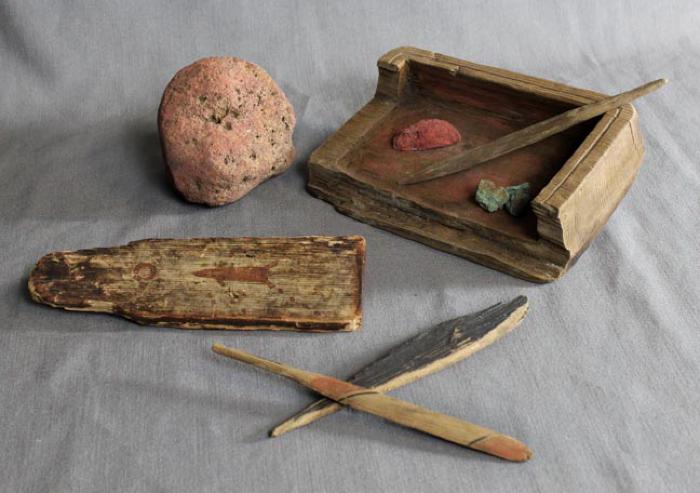Paint, Color — KRaasirluni

Painted designs are the final artistic touch on many Alutiiq objects. Artisans continue to decorate everything from masks, hunting hats, and paddles to household implements withcolorful geometric designs, animal shapes, and human figurines. In classical Alutiiq society, paint was also applied to the body. People reddened their faces before traveling or receiving guests, and warriors painted their faces before a raid. At winter festivals, dancers adorned their faces and chests with painted lines, and shamans performed naked, wearing only body paint. To show their grief, mourners covered their faces with black paint, and like travelers, the faces of the dead were painted red.
Before the availability of commercially manufactured pigments, Alutiiq people created paints from plants and minerals. Artists extracted colors from barks, grasses, and berries or created colorful powders by crushing red shale, iron oxide, copper oxide, and other minerals with a mortar and pestle. They mixed these pigments with a binder of oil or blood. Historic sources indicate that artists often cut their noses with shells to obtain blood for paint. Paint mixed with blood lasted longer than paint mixed with oil, and therefore it was used to decorate objects, like paddles, that were used in the water.
Artists applied paint to objects with their fingers, a small stick, or possibly a paintbrush made with animal hair. Archaeologists studying late prehistoric village sites have found small, decorated handles with a tiny knob on one end. They speculate that bristles were tied to these delicate knobs for fine painting. Native artists in southeast Alaska once used similar tools.
